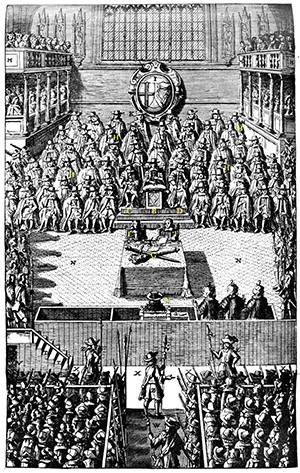Charles I: Regicide and Republicanism
On a cold January morning in 1649 Charles I stepped out onto a scaffold in Whitehall and into history, seen by some as a tyrant, by others as a martyr. But how far was the intellectual climate of mid-17th-century England ready for the republic that followed? Sarah Barber presents the latest thinking.

The most public and profound examination of the personal morality of an English monarch was undertaken at Westminster Hall in January 1649. The House of Commons, which had on the fourth of the month declared itself to be the supreme and sufficient power in the land, had established a High Court of Justice to pass judgement on Charles Stuart. 135 men sat as 'commissioners', both judge and jury, surrounding and presided over by the lord president, John Bradshaw, who resorted to wearing a specially reinforced hat to protect himself from outraged, sniping royalists. The wife of the general of the New Model Army shouted abuse at the judges from the balcony.





